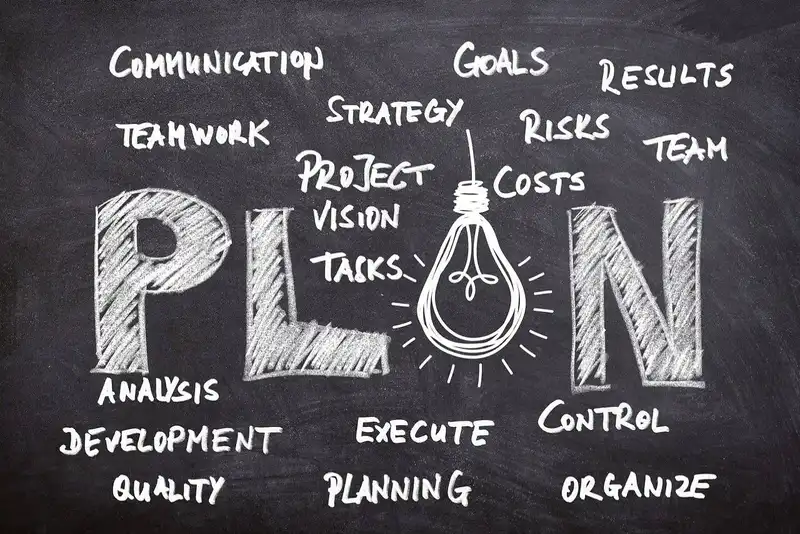The Top Strategies for Employee Development
What is a Development Strategy?
An employee development strategy is a combination of processes and tools meant to ensure that employees have the right skills to do their jobs and that they are able to learn new skills in response to a changing business environment.
Goals of an Employee Development Strategy

An employee development strategy is meant to be an extension of the corporate mission and vision by ensuring that human resources have the skills to meet company objectives.
Having a development strategy in place helps in employee retention. Companies want to hold on to employees who have drive and enthusiasm. These employees typically look for environments that not only appreciate the skills they have but also enable them to learn new skills or to upgrade existing ones.
Another goal of an employee development strategy is to allow companies to adapt to a changing business landscape. Business models may change slowly or abruptly, but when they do, employee skill sets must change with them.
An employee development strategy provides a process that allows new skills to be added to the workforce skill portfolio to support the new business model.
Choosing an Employee Development Strategy

The following steps will guide you in choosing an employee development strategy-
- Step 1- Map the current skills of your employees
These are the skills that employees currently have. They are not necessarily the ones on their job description. There might be some skills listed in the job description that they don't really need or never use and there might be some skills that they have that do not appear on the job description. - Step 2- Define the skills that employees must have now or in the near future
Here is where mapping to company goals come into play. Achieving those time-based targets depends a lot on the skill set of your human resources.
For each role in your organization, what is the minimal list of skills needed to do an adequate job? What is the optimal list of skills needed to do an excellent job? How is your business changing? What are the employee skills needed to effectively meet this change? When will these new skills be needed? - Step 3- Identify the skill gaps
Now that you know what skills you have for each role in your company and what skills you need for those roles, you can see if there is a gap between the skills your employees have and what they should have. - Step 4- Choose an employee development strategy
Skill gap information in hand, you know what skills you need to incorporate into your workforce. You are now in a position to decide on a specific employee development strategy. We discuss the more popular ones in the next section.
Top Employee Development Strategies
In an ever-adapting business environment, ensuring you are instilling the correct strategies to help develop your employees is a top priority for business success. This can be accomplished through technological means or in-person employee training programs.
But by providing your employees with the tools they need to properly learn and grow on the job can mean the difference between having an engaged and motivated workforce or losing top talent.
Learning Management Systems
A Learning Management System or LMS takes advantage of technology to enable employees to learn online. Think about an LMS as a performance management employee training program that are specifically geared to teach your employees their jobs. Courses that employees can access anytime anywhere through the internet.
You can define a learning path for each role in your company that is composed of everything that the employee in that role needs to learn.
You can also upgrade the courses in your LMS to adjust to new business demands or to anticipate the needs of a new corporate direction.
There are many LMS suppliers online that have prebuilt courses for your specific business or that can assist you in crafting a customized learning course for your company.
Apart from teaching your employees, an LMS will also allow you to track their progress by letting you monitor who has taken advantage of the training and who hasn't.
The data given by the LMS can be used with actual employee performance data to assess the impact of the training and to make adjustments if necessary.
An advantage of having an LMS is that you have an employee development tool that is reusable. You can use the LMS for onboarding new employees or for retraining existing employees.
On-The-Job Development

Apart from the technology-dependent approach of LMS is the highly-effective old school' approach of in-house or on-the-job development. This means that you introduce arrangements within your business to foster employee development.
One of those arrangements is mentoring. Mentoring is partnering a new employee with a highly experienced employee. As they work side by side, the less experienced employee learns from the more experienced employee.
A variation of mentoring is shadowing which involves assigning an employee for a limited time to observe another employee at their work, maybe doing some hands-on work from time to time. This will again result in a learning experience for the shadow' employee.
Job rotation is a great way to counteract an employee getting bored with their role. It is also a good way to widen that employee's skill set while, at the same time, the company gets the advantage of employees with overlapping skills. This is particularly effective when doing the rotation within related roles since it fosters an appreciation of the synergies of the different jobs within the company.
If you see a coming change in your business model that will mean you will need a bigger headcount for one role and less personnel for other positions, these on-the-job development techniques are an excellent way to start the transition. You can use mentoring or shadowing to transition redundant employees to fill new and needed roles.
An advantage of on-the-job development is that it incorporates your employee development strategy into regular operations. Training hours are not separate from work hours.
Conclusion
- An employee development strategy is a related set of processes and tools that are meant to teach employees the skills needed for their role in the company, upgrade existing skills, or add new ones.
- An employee development system is an extension of a company strategy that can be used to ensure that on-the-ground skills are aligned with the company's mission and vision.
- Changes in the business model can be handled much easier with an employee development system in place since the system will allow an organized way of teaching new skills to keep up with the changing business landscape.
- Before choosing an employee development strategy skill gaps must be identified. Skill gaps are identified on a per role basis and are done by comparing the current employee skills with the employee skills that are needed and will be needed by the business. The missing skills comprise the skill gap.
- A top employee development strategy is the adoption of a Learning Management System (LMS). An LMS uses an online tool to create a learning path for each role in the company. An LMS allows 24/7 access to learning resources and tracking of employee learning progress.
- An older but still popular employee development strategy is On-The-Job Development. This strategy takes advantage of learning while working and leverages the knowledge base of more experienced workers to accelerate the learning or new or inexperienced employees.






